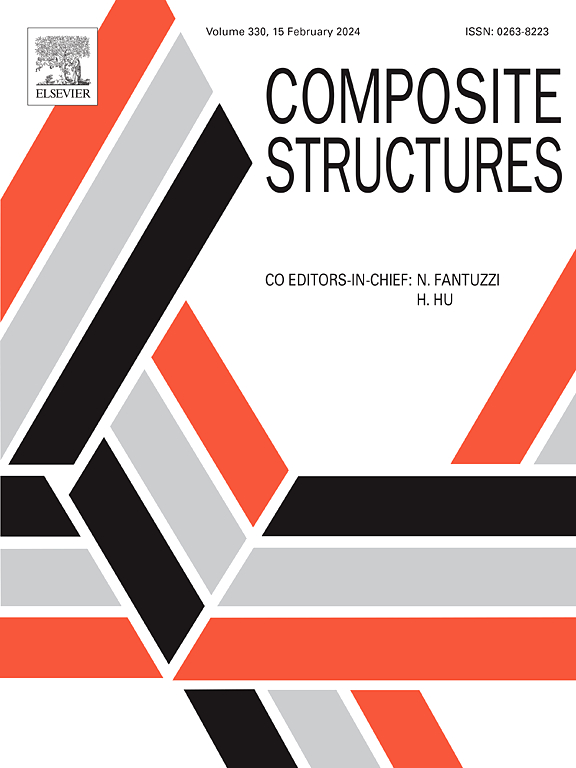Damage evolution and failure mechanism of 2.5D woven composite tubes under quasi-static lateral compression
IF 7.1
2区 材料科学
Q1 MATERIALS SCIENCE, COMPOSITES
引用次数: 0
Abstract
2.5D woven composites are ideal candidate materials for deep-sea pressure tubes owing to their excellent out-of-plane properties. This paper presents the damage evolution and failure mechanism of 2.5D woven composite tubes under quasi-static lateral compression. To conduct this study, 2.5D woven composite tubes with different thickness-to-diameter ratios, 0.04, 0.07 and 0.10, were designed and prepared. The quasi-static lateral compression tests were carried out in order to evaluate the progressive damage analysis, combining high speed photographic image with acoustic emission technologies. The results show that the increase of the ratio of thickness-to-diameter, the deformation and shear failure of the sample can be inhibited obviously. Due to the enhanced interlayer interaction, the lateral stiffness of the sample is obviously improved, so the lateral bearing stability of the sample is improved. When the peak load of samples with the thickness-to-diameter ratio of 0.1 reached 11.51 kN, it exceeded that of samples with thickness-to-diameter ratios of 0.04 and 0.07 by 450% and 82%, respectively. Furthermore, the failure mechanisms of samples with the thickness-to-diameter ratio of 0.1 were controlled by delamination fracture, whereas that of 0.04 and 0.07 were mainly influenced by shear failure and delamination failure, respectively.

准静态横向压缩条件下 2.5D 编织复合管的损伤演变和破坏机理
2.5D 编织复合材料具有优异的平面外性能,是深海压力管的理想候选材料。本文介绍了 2.5D 编织复合材料管在准静态横向压缩下的损伤演变和失效机理。为了开展这项研究,设计并制备了不同厚度直径比(0.04、0.07 和 0.10)的 2.5D 编织复合管。为了评估渐进损伤分析,结合高速摄影图像和声发射技术,进行了准静态横向压缩试验。结果表明,随着厚径比的增加,样品的变形和剪切破坏得到明显抑制。由于层间相互作用增强,试样的横向刚度明显提高,因此试样的横向承载稳定性得到改善。当厚度与直径之比为 0.1 的试样的峰值载荷达到 11.51 kN 时,分别比厚度与直径之比为 0.04 和 0.07 的试样高出 450% 和 82%。此外,厚度与直径之比为 0.1 的样品的破坏机制主要由分层断裂控制,而厚度与直径之比为 0.04 和 0.07 的样品则分别主要受剪切破坏和分层破坏的影响。
本文章由计算机程序翻译,如有差异,请以英文原文为准。
求助全文
约1分钟内获得全文
求助全文
来源期刊

Composite Structures
工程技术-材料科学:复合
CiteScore
12.00
自引率
12.70%
发文量
1246
审稿时长
78 days
期刊介绍:
The past few decades have seen outstanding advances in the use of composite materials in structural applications. There can be little doubt that, within engineering circles, composites have revolutionised traditional design concepts and made possible an unparalleled range of new and exciting possibilities as viable materials for construction. Composite Structures, an International Journal, disseminates knowledge between users, manufacturers, designers and researchers involved in structures or structural components manufactured using composite materials.
The journal publishes papers which contribute to knowledge in the use of composite materials in engineering structures. Papers deal with design, research and development studies, experimental investigations, theoretical analysis and fabrication techniques relevant to the application of composites in load-bearing components for assemblies, ranging from individual components such as plates and shells to complete composite structures.
 求助内容:
求助内容: 应助结果提醒方式:
应助结果提醒方式:


